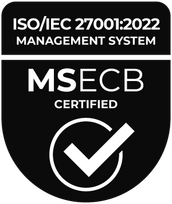In the competitive web development landscape, efficiency, and speed are the keys to success. Companies that streamline well-defined processes and deliver exceptional results at lightning speed gain a significant advantage. P2H, an American IT company with Ukrainian roots, has emerged as a trailblazer in the industry by solving “the OXO problem.” The result is a production line approach that has revolutionized design-to-HTML conversion, set new standards for excellence, and helped close the skills gap other similar businesses face.
What is the OXO problem?
When you have ordinary processes, you can hire extraordinary people but still have ordinary results. Ordinary, eXtraordinary, Ordinary – OXO for short.
Of course, the converse of the OXO problem is to have eXtraordinary processes, hire “Ordinary” people, and attain eXtraordinary results. XOX, if you will.
The best example of a business that identified the need for fully defined extraordinary processes is McDonald’s. The fast food giant is known for its consistent quality and service at its thousands of locations worldwide. This is primarily due to the company’s detailed operations manual, which outlines every step of the cooking process and the precise way each item should be prepared.
Coca-Cola, Starbucks, Amazon, and many more can contribute their success to solving the OXO problem, which allows them to hire merely talented and skilled people – rather than superstars – and still achieve extraordinary results at scale
Applying XOX to the tech industry
When P2H was founded 17 years ago, markup projects came into existence straightforwardly, with a single engineer juggling three roles: project manager, developer, and QA. However, things became overwhelming once it hit the tenth project of the day. As projects became more complex and its client base reached stratospheric heights, the old method no longer met business requirements.
At the heart of P2H’s approach was their innovative design-to-HTML service, which started with the launch of PSD2HTML.com (lately rebranded as GetDevDone.com) – the service that put them on the map. Their turnkey solution allowed clients to submit their website designs in the evening and receive pixel-perfect HTML code the following day. P2H made this unprecedented quick turnaround time possible through a well-organized system that transformed design files into functional web assets with precision and efficiency.
At the beginning of the company’s journey, P2H started using a “conveyor belt” implementation. Inspired by industrial manufacturing techniques, giants of fast food, and the retail sector, its solution to the OXO problem includes well-defined, excellent, and constantly improving processes and breaks down complex tasks into smaller, manageable steps that flow seamlessly from one stage to another.
This systematic approach eliminates bottlenecks and ensures a smooth work progression, leading to faster turnaround times and increased productivity. While some companies have attempted to implement this concept in web development, P2H is a shining example of its successful application.
Goodbye OXO problem, hello throughput doubling
Dmitriy Kucher and Dmitriy Breslavets, the founders of P2H, recognized the potential of an XOX approach early on. Their company quickly outpaced competitors, leaving others needing help replicating their success. The secret to P2H’s accomplishments lies in its ability to balance automation and human expertise. And the results aren’t only apparent in throughput. P2H’s methodology delivers the ability to draw from a larger talent pool and keep team costs low.
Throughput has doubled since we solved the OXO problem,” Breslavets said. “But in the long run, we managed not only to increase throughput but also to reduce the cost of production and accelerate production growth significantly. Managers could be just suitable people with good English and soft skills. We could delegate quality control to those with junior-level qualifications.
While generative AI and automation have become prevalent in the web development industry, P2H now strategically focuses on clients requiring personal touch and human creativity. By carefully selecting projects that demand human expertise, P2H ensures that each client receives customized solutions tailored to their unique requirements.
Solving the OXO problem has transformed our approach to managing projects, but it has had to evolve with the different stages of the company,” Breslavets said. “As we grew to 350 people, projects became more complex, and our old system couldn’t keep up. Clients needed extensive meetings with project managers to explain detailed design and implementation requirements because we were now creating entire websites on platforms like WordPress, Magento, Drupal, and others. This required us to redefine the roles of project managers and implementers
To deal with these more complex projects, P2H organized clusters and embraced holacracy, where everything revolved around the client’s needs. Clusters typically included multiple PMs, developers, and QAs, and as they worked closely, they allocated tasks as needed, swiftly resolving accumulated questions
The conveyor belt system that worked so well in the early years is anti-agile,” Breslavets said. “It’s an impervious manufacturing process. Not good or bad, not suitable or unsuitable. It suited us for a long time, yielding the desired results. When it ceased to be suitable, agile came into play.
Regardless of the team size or complexity of the client and its needs, the lessons learned in solving the OXO problem – having excellent, well-defined, and documented processes with a commitment to constant improvement – not only apply but are core to P2H’s success. The unwavering commitment to this ethos and the delivery of high-quality services has earned them an enviable reputation among clients and industry peers.









